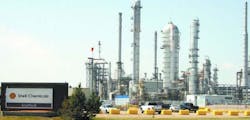The Importance of Interoperability to Asset Management
Asset management systems are extremely popular throughout industry for a variety of reasons, ranging from the streamlining of maintenance procedures to the reduction of downtime via targeted servicing. Likely the biggest reason for the wide adoption of asset management systems is their straightforward return on investment—by avoiding just one unplanned shutdown, the systems more than pay for themselves.
In all of the coverage that asset management systems have received in recent years, one aspect of their core functions often gets overlooked—the communication pathways that connect the field devices being managed to the asset management system.
One organization that focuses a lot of its attention on this is the FDT Group, an open, independent, not-for-profit association of international companies dedicated to establishing the FDT Technology as an international standard with broad acceptance in the automation industry.
“There are many suppliers who provide low cost solutions that give access to the intelligent device information needed for asset management systems,” says Glenn Schulz, managing director of the FDT Group. “Although it might take some work to get these solutions installed and connected, the investment is relatively small compared to the potential increase in plant reliability they will enable.”
A common problem in getting asset management systems fully deployed for optimal use, Schulz observes, is that there is often “no clear owner of the information in the asset management system or clear responsible department that will take action based on the information. The typical plant departments or organization functions may not lend themselves to viewing, analyzing, interpreting and taking decisive action unless there is clear ownership by all parties involved. This requires a major culture and work process change. A management level commitment and cross-functional teams need to be established to create, manage, and implement an effective asset management program that can truly maximize all plant assets.”
To illustrate how companies are addressing interoperability and the ensuing information management responsibilities associated with effective use of asset management systems, Schulz shared information on two applications of FDT as part of an overarching asset management strategy.
Shell
In 2011, Shell commissioned a 100,000-barrel per day (bpd) expansion to its existing 155,000 bpd capacity Scotford Upgrader near Fort Saskatchewan in Alberta, Canada. The upgrader processes "extra heavy" crude oil (or bitumen) from the Albian Sands Mine into a range of synthetic crude oils.
The Shell team found that HART technology provided a way to streamline testing and pre-configuration of devices so when they were installed, everything was ready for a smooth start-up run.
During the project’s early phase, Shell engineers realized that they had the equipment (Honeywell’s Experion Process Knowledge System and Field Device Manager) to provide a platform to take advantage of smart instrumentation. This equipment could be used not only during commissioning, but also during normal operation and maintenance, as it provided a plug-and-play platform for all of the site’s intelligent devices. It also allowed for the addition of EDD (Electronic Device Descriptions) and FDT/DTM (Device Tool Manager) Technology without additional testing. Shell uses the system to bring data to the control and asset management system. Additionally, it provided templates for standardizing process variables coming from field instruments.
The instrument asset management approach adopted by Shell provided the company with the following benefits:
• Fast and safe device configuration and programming, as well as the commissioning of 1,200 intelligent devices from 26 vendors;
• Loop function testing and process variable simulation could be performed in 30 percent of the time normally required with no potential for human error;
• Elimination of the need to add external hardware to more than 700 smart valve positioners saves about $2,000 per valve;
• Ability to monitor secondary transmitter temperature variables remotely for improved efficiency in preventive maintenance on heated instrument boxes saves more than $200,000 per year; and
• The ability to perform re-calibration, parameter checks, and device diagnostics from a central control room rather than at each individual transmitter location provides savings of $100,000 per year.
MOL Group
The MOL Group’s Danube refinery in Százhalombatta, Hungary, overhauled its maintenance systems in 2005 with a unified asset management system strategy. The combination of HART and Foundation Fieldbus data feeding into an asset management system has changed the way MOL runs maintenance, and the way it looks at diagnostic data, Schulz says.
Because the asset management systems used by MOL were DTM enabled, the engineers at the site are able to work with different field communication protocols and have access to the predictive notifications they need to avoid unplanned outages. FDT Frame Applications and DTMs support MOL’s preventative maintenance strategy with device diagnostics and condition monitoring.
Gabor Bereznai, MOL instrument and electrical department head, believes valve diagnostics to be the most important result of the company’s unified asset management strategy. “Predictive notification can save $7,000 to $100,000 or more by avoiding unplanned outages,” he says. “At our facility, one day’s diesel production is worth $300,000. In 2011, with the help of the asset management system, we avoided a one-day outage.
MOL has an ongoing contract with its three DCS vendors to maintain the systems and keep them current. The company also requires that everyone on the team be trained on maintenance procedures. “Maintenance involves all of the staff, and everybody participates,” says Bereznai.

